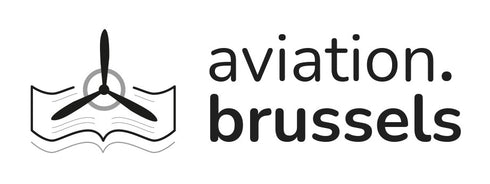No.S10 - Luftwaffe Bomber Camouflage & Markings 1940 (Vol.1)
Product image 1

Product image 2

Product image 3

Product image 4

Product image 5

Product image 6

Product image 7

Product image 8

Product image 9

Product image 10

Prix régulier 25,00 € TTC 6%
Heinkel He 111 (Germany) Like a number of German aircraft which were designed and built in the 1930s, the He 111 was planned from the beginning for dual-purpose role.
Caractéristiques
| Size | 18,5 X 24,7 X 0,5 cm |
| Nbr. of pages | 50 |
| Book cover finish |
Perfect paperback |
|
Published Date |
1972 |
| Language | English |
| Autehor | Christopher F. Shores |
| Collection / Serie | AIRCAM AVIATION SERIES |
| Editor | Osprey Publishing Limited, England |
Description
Heinkel He 111 (Germany) Like a number of German aircraft which were designed and built in the 1930s, the He 111 was planned from the beginning for dual-purpose role. The first was in a legitimate civil capacity, during which the engines and airframe would be developed to good standards of reliability, or modified as necessary to attain such high standards. The second role was for military usage by the Luftwaffe which, at the period when a number of Germany's most succesful wartime aircraft were being designed and/or developed, was until a clandestine organisation.
Junkers Ju 88 (Germany) The Ju 88 became the Luftwaffe's 'maid of all work' and production eventually totalled 14,980 aircraft. It was the first flown in prototype form as a bomber on 21 December 1936 and by the beginning of 1939 approximately 50 were in service. During World War II the basic design was adapted for a wide variety of duties and was still in production when hostilities ended, having served throughout the entire period of the European war.
Dornier Do 17 (Germany) The Do 17 was less important to the Luftwaffe during World War II then other later types of medium bomber and reconnaissance aircraft, but nevertheless served in one role or another throughout the war. Although originally configured as a commercial high-performance mail and passenger-carrying aircraft for Deutsche Luft-Hansa, it was as a replacement for the stop-gap Junkers Ju 52/3m bomber/transport that the Do17 'Flying Pencil' is best remembered, and for being the first type of German aircraft shot down by an RAF single-seat fighter during the war (a Hurricane of No 1 Squadron on 30 October 1939).
AIRCAM AVIATION SERIES LATE 1960S/EARLY 1970S
The Aircam Aviation Series Of Books Took A Largely Pictorial Look At Classic Military Aircraft Types, With Only A Short Narrative Text Serving As Introduction. A Companion Series Of Specials Portrayed The Camouflage And Markings Worn By Various Military Air Arms And Flying Units.
After 5-6 Pages Of Concise Text Introducing The Subject, The Remainder Of Each Book Comprised B+W Photographs, 8 Pages Of Colour Profile Artwork And 3-4 Pages Of Small Plan-View Tone Drawings, Showing The Upper And Lower Surfaces Of The Aircraft Illustrated In Colour. The Original Editions Of The First Few Titles Were Printed Entirely On Glossy Paper, But Later Titles And Reprints Appeared With Matt Paper For All Except The Colour Profiles. This Resulted In Rather Poor Reproduction Of Some Of The Photographs.
Subsequent Reviewers Have Cast Doubt On The Accuracy Of Some Of The Colour Profiles, But The Range Of Aircraft Chosen Is Still Impressive And The Colour Schemes Often Unusual. The High Prominence Given To Japanese Aircraft Was Very Unusual For The Late 1960s/Early 1970s. Text written by aeroflight










